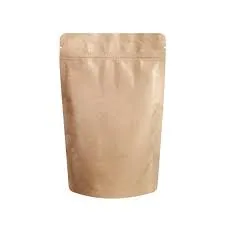- Afrikaans
- Albanian
- Amharic
- Arabic
- Armenian
- Azerbaijani
- Basque
- Belarusian
- Bengali
- Bosnian
- Bulgarian
- Catalan
- Cebuano
- chinese_simplified
- chinese_traditional
- Corsican
- Croatian
- Czech
- Danish
- Dutch
- English
- Esperanto
- Estonian
- Finnish
- French
- Frisian
- Galician
- Georgian
- German
- Greek
- Gujarati
- haitian_creole
- hausa
- hawaiian
- Hebrew
- Hindi
- Miao
- Hungarian
- Icelandic
- igbo
- Indonesian
- irish
- Italian
- Japanese
- Javanese
- Kannada
- kazakh
- Khmer
- Rwandese
- Korean
- Kurdish
- Kyrgyz
- Lao
- Latin
- Latvian
- Lithuanian
- Luxembourgish
- Macedonian
- Malgashi
- Malay
- Malayalam
- Maltese
- Maori
- Marathi
- Mongolian
- Myanmar
- Nepali
- Norwegian
- Norwegian
- Occitan
- Pashto
- Persian
- Polish
- Portuguese
- Punjabi
- Romanian
- Russian
- Samoan
- scottish-gaelic
- Serbian
- Sesotho
- Shona
- Sindhi
- Sinhala
- Slovak
- Slovenian
- Somali
- Spanish
- Sundanese
- Swahili
- Swedish
- Tagalog
- Tajik
- Tamil
- Tatar
- Telugu
- Thai
- Turkish
- Turkmen
- Ukrainian
- Urdu
- Uighur
- Uzbek
- Vietnamese
- Welsh
- Bantu
- Yiddish
- Yoruba
- Zulu
how to measure depth of an object
How to Measure the Depth of an Object
Measuring the depth of an object is a crucial task in various fields such as engineering, construction, archaeology, and even in everyday life. Depth measurement helps in understanding the dimensions of an object, planning construction projects, or analyzing archaeological sites. While there are different methods to measure depth depending on the context, this article outlines some of the most effective techniques and tools available for depth measurement.
Manual Measurement Techniques
1. Ruler or Measuring Tape For shallow depths, a simple ruler or measuring tape can suffice. To measure depth using a ruler, place the ruler vertically into the object (for example, into a container filled with water). The depth can be read directly from the ruler at the water surface level. For submerged objects or depths that cannot be easily reached, a measuring tape can be lowered vertically to get an accurate measurement.
2. Plumb Line Method This traditional method involves using a plumb line – a weight hanging on a string – which can help in determining the vertical depth. Drop the weight into the object or the space to be measured, and once it hits the bottom, measure the length of the string from the point of suspension to the bottom. This method is particularly handy for measuring depth in large bodies of water or deep holes.
Advanced Measurement Techniques
3. Ultrasonic Sensors In industrial applications, ultrasonic sensors are widely used to measure depth. These sensors send out sound waves that travel through a medium (air or water) and bounce back to the sensor when they hit an object. The time it takes for the sound waves to return allows the sensor to calculate the distance, thus providing an accurate measure of depth.
how to measure depth of an object

4. Laser Depth Measurement Laser-based devices can also be useful for measuring depth accurately. These tools emit a laser beam that reflects off the surface of the object. By measuring the time it takes for the light to return, the device calculates the depth with high precision. Laser measurements are especially valuable in surveying and construction, where accuracy is paramount.
5. Doppler Effect Sonar technology employs the Doppler effect for measuring underwater depth. By using sound waves, sonar systems can determine the distance to the seabed or submerged objects by analyzing the frequency of the reflected sound waves. This method is particularly useful in maritime navigation and marine research.
Measuring Depth in Everyday Situations
6. Water Displacement Method For measuring the depth of an object that can be submerged (such as a rock or an artifact), the water displacement method offers a practical solution. By submerging the object in a graduated cylinder, the volume of water displaced can be estimated, and from this information, the depth can be inferred. This method is often used in classrooms for educational demonstrations.
7. Using a Smartphone Application With advancements in technology, many smartphone applications utilize the phone’s sensors to measure depth accurately. Some apps use the camera and augmented reality to calculate dimensions based on visual data. While this method may not be as precise as more traditional methods, it offers convenience and ease of use for casual measurements.
Conclusion
Measuring the depth of an object can be approached through various methods, each suitable for different contexts and accuracy requirements. From simple manual techniques using rulers and plumb lines to advanced tools like ultrasonic sensors and laser devices, the technique chosen often depends on the complexity and scale of the task at hand. Understanding these methods allows us not only to obtain measurements but also to enhance our interaction with the physical world, ensuring we are better equipped for various professional and everyday challenges. Whether you are in construction, research, or even conducting a DIY project at home, knowing how to accurately measure depth can make all the difference.













